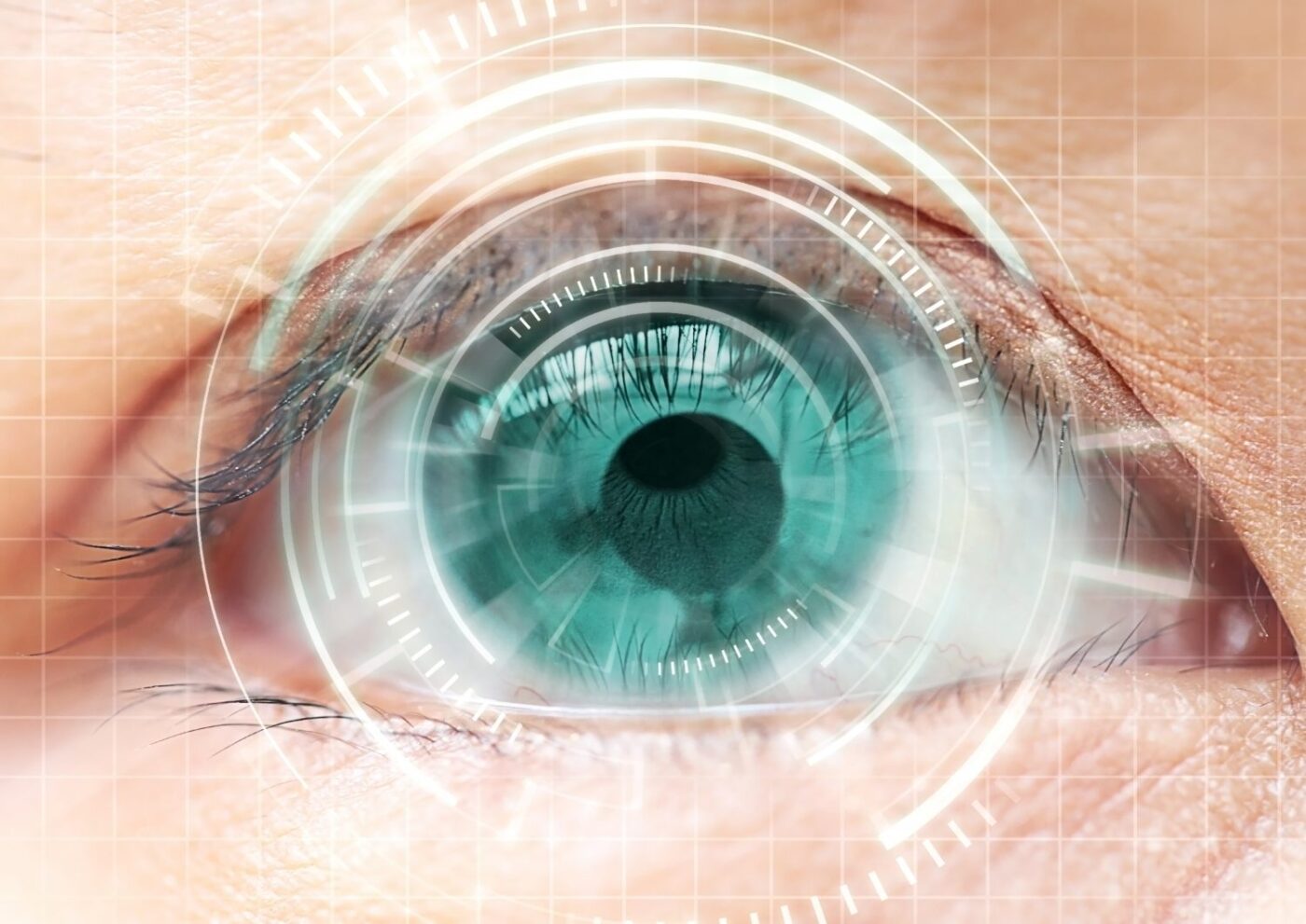
You have heard the term “All Laser LASIK”. But isn’t a laser already used in all forms of a LASIK procedure? What does “All Laser LASIK” really mean? Most importantly, what does this advancement in surgical technology mean to patients who are considering LASIK to improve their vision?
How is LASIK Traditionally Done?
LASIK stands for Laser In-Situ Keratomileusis. The cornea (the clear outermost covering of an eye) produces the majority of optical power in a human eye, modifying corneal shape can significantly improve one’s ability to see. Therefore, the goal of LASIK is to reshape one’s corneal contours and let light rays be properly focused on to the retinal photoreceptor cells (in the back of your eyes) – this results in clearer vision.
Traditionally, LASIK has 2 main steps:
- Step 1: After topical anesthesia via eye drops, an instrument containing a surgical blade (microkeratome) is utilized to make a thin, hinged flap on cornea. Once created, the flap is gently lifted to expose the underlying tissue layers to be reshaped,
- Step 2: Computer-guided excimer laser delivers programmed vision correction treatment onto the underlying corneal tissue surface, which changes tissue contours in order to achieve the desired vision correction. At the end of the short treatment session, the flap tissue is then laid back in place to serve as a natural bandage to ensure maximal post-operative comfort and faster recovery.
How Does Technology Differ for All Laser LASIK?
With All Laser LASIK, that first step is performed without a surgical blade. Instead, an ultra-fast femtosecond laser is used to precisely create the corneal flap in Step 1 as outlined in an earlier section. After this, rest of the procedure is basically the same: a “cool” excimer laser is used to reshape the patient’s cornea, and the corneal flap will be placed back in position to ensure comfort and fast recovery. This is the reason why that ALL Laser LASIK is also known by many different names, such as Bladeless LASIK, Blade-free LASIK, Femto-LASIK or Femtosecond-Assisted LASIK.
How Does Femtosecond Laser Work?
The flap creation process through the use of femtosecond laser is generally referred to as “Photodisruption”. Femtosecond laser uses energy waves in the far infrared light spectrum (1053nm). The highly focused light pulses generate a high energy field that expands at surpersonic speed. This ultra-fast movement of energy efficiently displaces neighboring tissue wherever these light pulses are delivered.
This process will also generate, within the cornea, cavitation bubbles that consist of carbon dioxide (CO2), water (H2O) and Nitrogen (N). Formation of these cavitation bubbles instantly lowers the temperature of the expanding plasma energy field, which is why All Laser LASIK is considered as a non-thermal treatment (so it does not cause heat-related tissue decompensations). The presence of these bubbles also helps surgeons to easily locate the free space right underneath the flap tissue, which means the flap area can be easily accessed and gently lifted.
How Does Excimer Laser Work?
After a laser flap is made and gently lifted from the cornea, LASIK surgeons will utilize an excimer laser to gently reshape underlying tissue layers via a process called “Photoablation”. In short, excimer laser emits far UV light wavelength that can disrupt chemical bonds in the appropriate tissue locations. The subsequent cellular displacement leads to a change in corneal shape without heat-related damage. Therefore, many clinical experts refer to excimer laser as a “cool” laser.
Why Choose All Laser LASIK?
There are a variety of reasons why your LASIK specialist may recommend a bladeless LASIK procedure. Because a femtosecond laser is used to create the corneal flap, there is a greater accuracy and consistency in how the flap area is created, which many LASIK specialists believe to be beneficial.
- Precise surgical control on flap thickness – With the precision of femtosecond laser, flaps created during bladeless LASIK are more predicable in their tissue architecture, ie, thickness of flap tend to be more uniform where center and edge thicknesses are the same or very similar. This means that the surface underneath the flap is much smoother, which can lead to better quality of vision and other improved outcomes after vision correct surgery, 1-3
- More capacities for flap customizations – Femtosecond laser software has higher level of sophistications when it comes to custom designing numerous flap parameters 4, such as flap diameter and the exact orientation designated for its flap hinge. These customizations help to create individualized treatment plans for patients with cornea sizes different from average and for patients with specific type of refractive errors (ie, farsightedness and/or astigmatism),
- More patients safely qualify for vision correction – Since flap thickness is created with high level of accuracy, the tissue thickness underneath the flap is also more predictable and better preserved. So, surgeons have more clinical ability to customize vision correction procedure to cater to each patient’s visual needs & anatomy. And patients who were not eligible for traditional LASIK may still be candidates for All Laser LASIK, such as patients with thin corneas, high refractive error and dry eyes, 5, 6
- Surgical predictability and Improved patient experiences – Since desirable flap morphology can be better controlled by utilizing laser, flaps can fit more securely when laid pack in position and potentially reduce healing time. Quicker visual recovery and better overall quality of vision can mean happier patient experiences in early post-operative period.
How Can I Find Out If I Qualify for All Laser LASIK?
All Laser LASIK can offer higher degree of surgical customizations and potentially better preservation of corneal tissue strength 6, so even some of the patients who could not have traditional LASIK may still be treated with Bladeless LASIK. However, it remains that not everyone can be candidates for Bladeless LASIK. For example, patients who had previous corneal refractive surgeries and/or has had a complication with blade flap may not qualify for further treatment with Bladeless LASIK. Additionally, some patients with corneal scars may also not be eligible for All Laser LASIK. Therefore, it’s important to consult your eye doctors and LASIK specialists on the state of eye health and whether you can qualify for LASIK vision correction.
If you’d like to find out if you are a candidate for LASIK, schedule a free consultation at a TLC Laser Eye Centers location near you.
References
- Salomão MQ, Ambrósio R Jr, Wilson SE. Dry eye associated with laser in situ keratomileusis: Mechanical microkeratome versus femtosecond laser. J Cataract Refract Surg. 2009;35(10):1756–1760.
- Duna Raoof-Daneshvar and Shahzad I. Mian (2012). Femtosecond Laser-Assisted Astigmatism Correction. Goggin M. Astigmatism – Optics, Physiology and Management. Rijeka, Croatia: InTech; 2012: 193-209.
- Gil-Cazorla R, Teus MA, de Benito-Llopis L, Mikropoulos DG. Femtosecond laser vs mechanical microkeratome for hyperopic laser in situ keratomileusis. Am J Ophthalmol. 2011 Jul;152(1):16-21.e2.
- Vryghem JC, Devogelaere T, Stodulka P. Efficacy, safety, and flap dimensions of a new femtosecond laser for laser in situ keratomileusis. J Cataract Refract Surg. 2010 Mar;36(3):442-8.
- Salomão MQ, Ambrósio R Jr, Wilson SE. Dry eye associated with laser in situ keratomileusis: Mechanical microkeratome versus femtosecond laser. J Cataract Refract Surg. 2009;35(10):1756–1760.
- Marshall J. Wound healing and biomechanics of corneal flap creation. Paper presented at XXIV Congress of the ESCRS; September 9, 2006; London, England.


